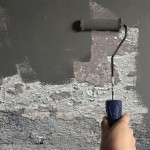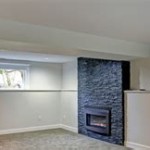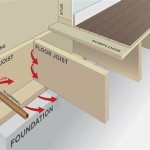What Is Best Flooring For A Basement That Floods?
Choosing the right flooring for a basement prone to flooding presents unique challenges. Unlike above-ground spaces, basements are often subject to moisture intrusion from various sources, including groundwater seepage, leaky pipes, and condensation. Selecting a flooring material that can withstand these conditions is crucial for preventing mold growth, structural damage, and costly repairs. The "best" flooring in this context is not necessarily synonymous with the most luxurious or aesthetically pleasing; rather, it prioritizes durability, water resistance, and the ability to facilitate quick drying after a flooding event.
Traditional flooring options like hardwood and carpet are generally unsuitable for basements that experience frequent flooding. Hardwood is highly susceptible to water damage, warping, and rot, while carpet provides an ideal breeding ground for mold and mildew. Even with prompt drying efforts, these materials can retain moisture and harbor microbial growth, leading to unhealthy indoor air quality. Therefore, careful consideration must be given to alternative materials specifically designed to perform well in damp environments.
The selection process should involve assessing the frequency and severity of flooding, the existing basement subfloor, and the desired aesthetic. A higher frequency of flooding necessitates a more resilient and water-resistant material. The condition of the subfloor will dictate whether any preparation or remediation is needed before installation. And finally, the choice of flooring should align with the overall design goals for the basement space.
Understanding Potential Basement Flooding Sources
Before selecting a suitable flooring material, it's essential to identify and address the underlying causes of basement flooding. Ignoring the source of the water intrusion will render even the most water-resistant flooring ineffective over time. Common sources of basement flooding include:
Groundwater Seepage: This occurs when groundwater levels rise above the level of the basement floor, causing water to seep through cracks in the foundation, walls, and floor. Proper drainage systems, such as French drains and sump pumps, can help mitigate this issue. Waterproofing the exterior foundation walls is another effective preventative measure.
Leaky Pipes: Faulty plumbing connections, damaged pipes, or overflowing appliances (e.g., washing machines, water heaters) can lead to significant water damage in the basement. Regularly inspect plumbing fixtures and appliances for leaks and address any issues promptly. Consider installing water leak detectors that can automatically shut off the water supply in the event of a leak.
Surface Water Runoff: Improper grading around the house's foundation can cause rainwater to flow towards the basement walls, increasing the risk of water intrusion. Ensure that the ground slopes away from the house to direct water away from the foundation. Clean gutters and downspouts regularly to prevent water from overflowing and accumulating around the basement.
Condensation: High humidity levels in the basement can lead to condensation on cool surfaces, such as concrete floors and walls. This moisture can contribute to mold growth and damage susceptible flooring materials. Using a dehumidifier to control humidity levels can help prevent condensation. Ensuring adequate ventilation is also crucial.
Addressing these underlying issues is paramount for creating a dry and healthy basement environment, regardless of the flooring material chosen.
Effective Flooring Options for Flood-Prone Basements
Several flooring options are particularly well-suited for basements that experience frequent flooding. These materials offer varying degrees of water resistance, durability, and ease of maintenance.
Epoxy Flooring: Epoxy is a thermosetting polymer that creates a seamless, waterproof, and durable surface when applied to a concrete floor. It is highly resistant to water damage, stains, chemicals, and abrasions. Epoxy flooring is also relatively easy to clean and maintain, making it an excellent choice for basements that require a hygienic and low-maintenance flooring solution. Epoxy can be customized with various colors, patterns, and textures to achieve a desired aesthetic. However, proper surface preparation is crucial for ensuring optimal adhesion and longevity. The concrete subfloor must be thoroughly cleaned, etched, and primed before applying the epoxy coating.
Sealed Concrete: Sealing concrete is a cost-effective option that enhances the water resistance and durability of existing concrete floors. Concrete sealers penetrate the concrete pores, creating a barrier that prevents water absorption and staining. There are various types of concrete sealers available, including acrylic, polyurethane, and epoxy-based sealers. The choice of sealer will depend on the desired level of protection and the intended use of the basement. While sealed concrete provides some protection against water damage, it is not entirely waterproof and may still be susceptible to moisture intrusion in cases of severe flooding. It's important to reapply the sealer periodically to maintain its effectiveness.
Luxury Vinyl Tile (LVT) and Luxury Vinyl Plank (LVP): LVT and LVP are manufactured flooring products that offer exceptional water resistance and durability. They are made from multiple layers of synthetic materials, including a waterproof core and a wear layer that protects against scratches and stains. LVT and LVP are available in a wide range of styles and designs, mimicking the look of natural wood, stone, and tile. They are also relatively easy to install and maintain. LVT and LVP are a good option for basements with moderate moisture levels and occasional flooding. However, it's important to choose a high-quality product with a thick wear layer for optimal performance and longevity. Ensure the subfloor is level and properly prepared before installation.
Tile Flooring (Porcelain or Ceramic): Porcelain and ceramic tile are highly water-resistant and durable flooring options that are well-suited for basements. They are impervious to water damage, stains, and scratches. Tile is also easy to clean and maintain, making it a practical choice for high-traffic areas. Porcelain tile is denser and less porous than ceramic tile, making it even more resistant to water absorption. Tile flooring can be installed with grout, which is also susceptible to moisture intrusion. Using epoxy grout instead of cement-based grout can further enhance the water resistance of the tile installation.
Rubber Flooring: Rubber flooring, particularly in the form of interlocking tiles or rolls, offers excellent water resistance and shock absorption. It's a popular choice for basements that are used as gyms, playrooms, or workshops. Rubber flooring is also slip-resistant, making it a safe option for damp environments. It's relatively easy to install and maintain, and it's available in a variety of colors and textures. While rubber flooring is water-resistant, it's important to ensure that the subfloor is properly prepared to prevent moisture from becoming trapped underneath the flooring.
Key Considerations for Installation and Maintenance
Proper installation and maintenance are critical for maximizing the lifespan and performance of any basement flooring, especially in flood-prone environments.
Subfloor Preparation: Before installing any flooring material, it's essential to ensure that the subfloor is clean, dry, and level. Repair any cracks or imperfections in the concrete subfloor and apply a moisture barrier to prevent moisture from wicking up from the ground. Consider using a self-leveling compound to create a perfectly flat surface for the flooring installation.
Moisture Mitigation: Even with water-resistant flooring, it's important to address any underlying moisture issues in the basement. Install a vapor barrier under the flooring to prevent moisture from migrating up from the subfloor. Use a dehumidifier to control humidity levels and prevent condensation. Ensure proper ventilation to promote air circulation and reduce the risk of mold growth.
Regular Cleaning and Maintenance: Clean the flooring regularly with a mild detergent and water. Avoid using harsh chemicals or abrasive cleaners that can damage the flooring surface. Promptly address any spills or leaks to prevent staining or water damage. Inspect the flooring periodically for signs of wear and tear and make any necessary repairs.
Post-Flood Procedures: In the event of a flood, it's crucial to act quickly to minimize water damage. Remove any standing water immediately using a wet/dry vacuum or sump pump. Dry the flooring and subfloor thoroughly using fans and dehumidifiers. Inspect the flooring for signs of mold growth and disinfect any affected areas. Consider hiring a professional water damage restoration company to ensure that the basement is properly dried and sanitized.
Selecting the right flooring for a basement that floods requires careful consideration of the potential sources of water intrusion, the properties of different flooring materials, and the importance of proper installation and maintenance. By prioritizing water resistance, durability, and ease of maintenance, homeowners can create a comfortable and healthy basement environment that can withstand the challenges of occasional flooding.

Best Flooring For Basements That Flood Try Waterproof Vinyl

Best Waterproof Flooring For Basements That Flood

Flooring For Flood Prone Areas Inc

Best Waterproof Flooring For Basements That Flood

Best Basement Flooring Options For A Flood Prone

Flooring For Flood Prone Areas Inc

Best Waterproof Flooring For Basements That Flood

Best Flooring For Basements Metro Contractors
Here Are The Best Flooring For A Basement That Floods

Best Waterproof Flooring For Basements That Flood
Related Posts







